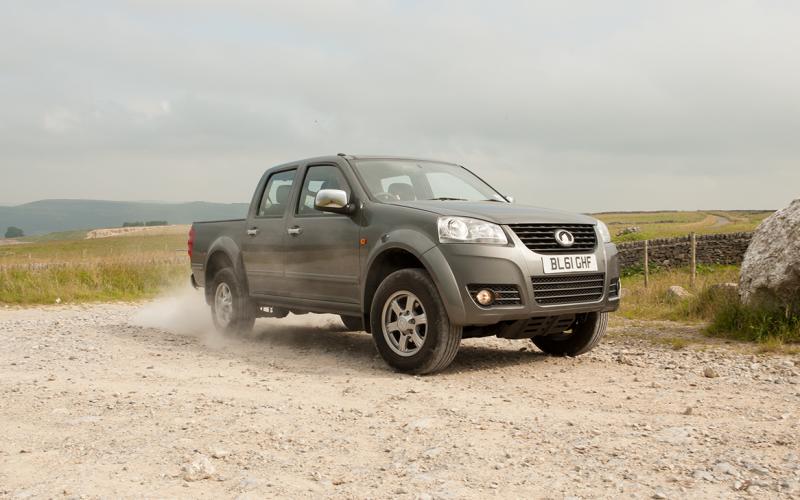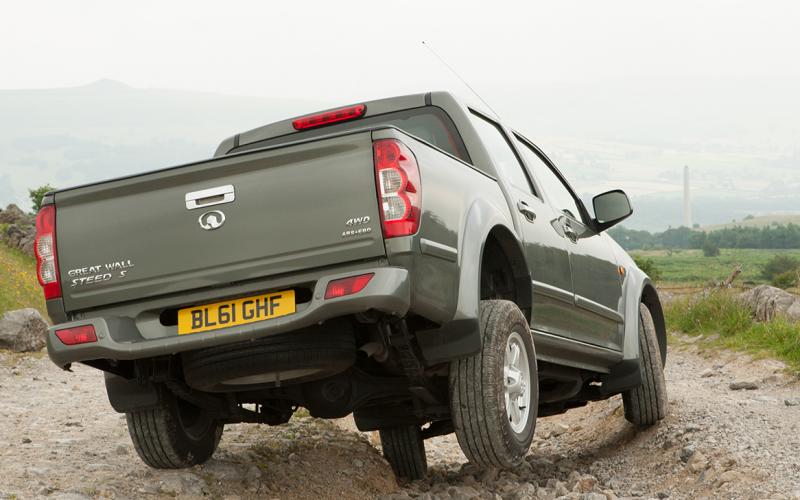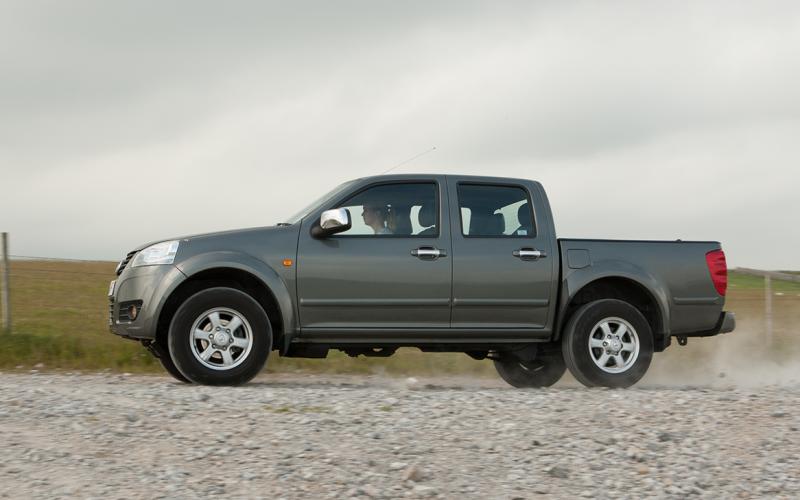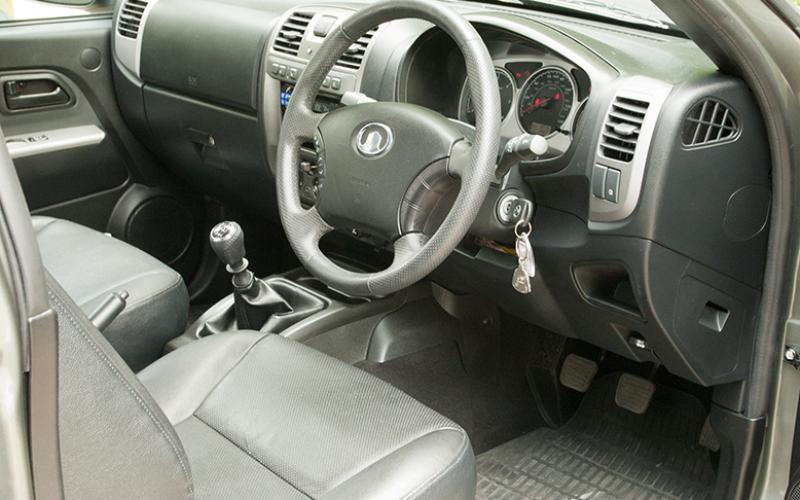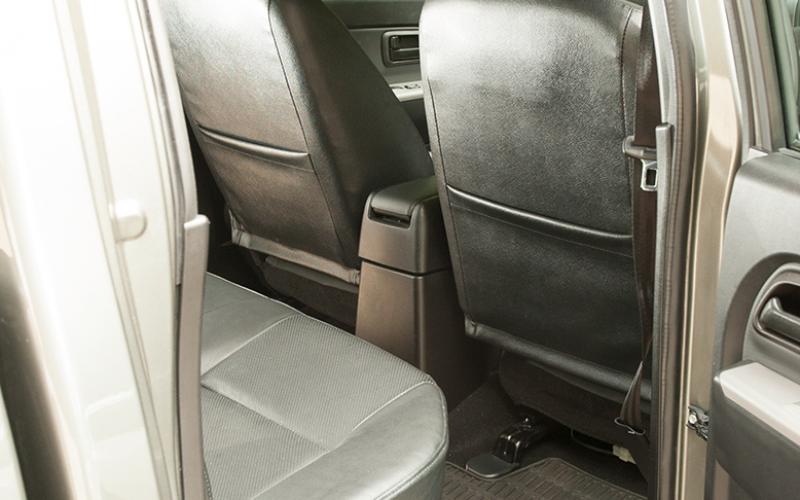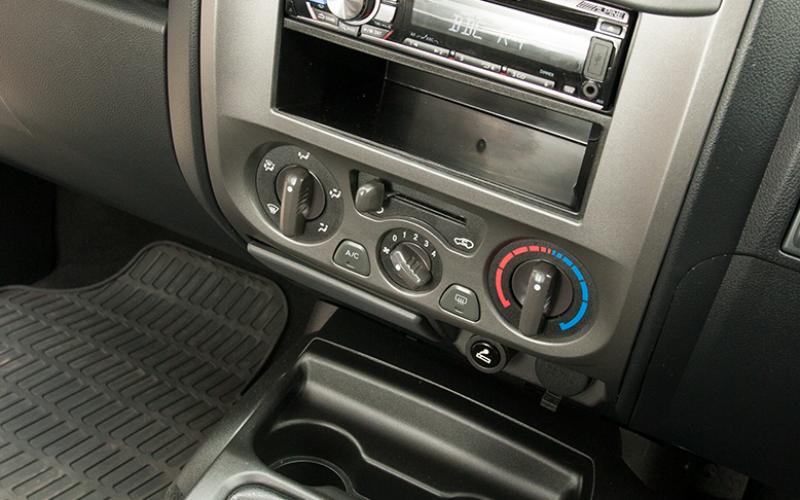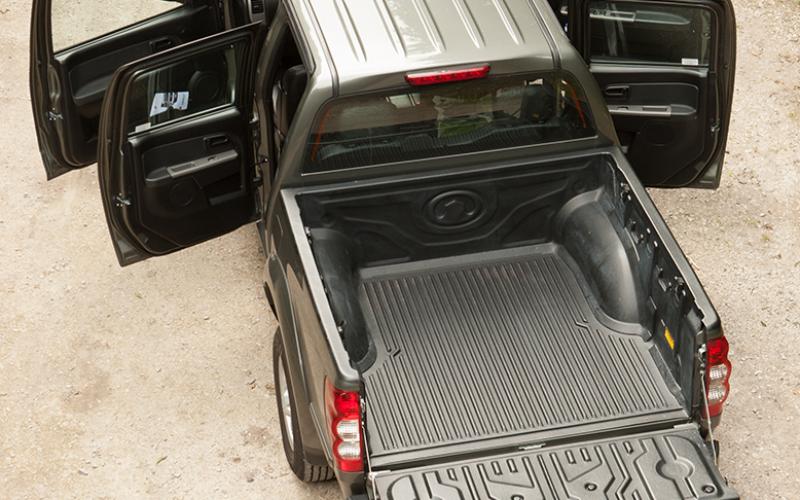Great Wall Steed ♦ Vehicle Test ♦
Great Wall’s double-cab is Britain’s first Chinese vehicle. With masses of kit for the money, is it the same old cheap-car story, or a new dawn in value motoring?
It was only a matter of time before Chinese vehicles started coming to the UK. With the arrival of the Great Wall Steed, that time has arrived.
A double-cab pick-up along the tried and trusted lines we all know so well, the Steed makes an eminently suitable ambassador for its country. Great Wall sells 120,000 of them each year back home, and expects to export a third more on top during 2012 as it grows towards a total annual output of 1.5 million vehicles by the middle of this decade. Big, big numbers – the only kind, it seems, that China does.
Well, almost. There’s one kind of number that’s not so big about the Steed, and that’s the one with a pound sign in front of it. The vehicle arrives in the UK with a range of two models: the base-spec S includes leather, alloys, air-con, heated seats, Bluetooth and a premium stereo with USB connectivity and controls on the steering wheel – and it costs £13,998 plus VAT.
That’s a serious amount of truck for your money. Even the top-spec SE is only £15,998, again plus VAT, and it adds parking sensors, a loadbay liner, chrome side steps and a body-coloured hard-top.
The bottom line is that this is a high-spec four-door for entry-level single-cab money. So, you’re asking, where’s the catch?
Great Wall’s UK importer (the same company behind Subaru and Isuzu, and therefore no mugs when it comes to build quality) clearly knows that people are going to be sceptical. They’re keen to tell you that the factory benchmarks premium Japanese brands, not budget Korean ones. And they’re making a lot of noise about customer service, explaining that ‘instead of being appointed, dealers opted in by promising to really look after customers.’
If you’re of the opinion that a car dealer’s promise is the one thing even less trustworthy than that of a politician, that’ll make you laugh out loud. Our own editor actually bought a used car from a Great Wall dealer earlier this year, and that’s certainly the effect it had on him.
The ‘Great Wall Promise’ is a seven-point customer care manifesto. What it boils down to is that they offer a delivery service for test drives and maintenance, plus a monthly payment plan for fixed-price servicing, and will only invoice you for work you’ve agreed to. Beyond that, a 3-year or 60,000-mile warranty hardly counts as anything special, and promises to ‘ensure any downtime is kept to an absolute minimum’ and ‘keep our word and do what we say’ are unlikely to win over any cynics. Actions will speak louder than words: it’s what those actions turn out to be that matters.
Bacially, Great Wall knows it’s got something to prove before people will trust it. The notion of everyday customer care dressed up as something special may or may not be a start, but the company surely also knows it’ll take more than rhetoric to do it.
What will it take? Well, a good first step would be if, on climbing aboard a Steed, it set itself apart from previous el cheapo disappointments by blowing you away with the quality of its interior.
It doesn’t. Yes, there’s a lot of kit there. But it’s not even last-generation in terms of materials, imagination, execution or fit and finish. The basic framework of the dash is good and sound, but the trim panels hung on it are flimsy, the door panels move in and out when you pull on their handles, creaking ominously as they go, and the floor console feels as if you could rip it out with one hand. If you’re test driving one, try opening the lid on top of the cubby box and yanking it from side to side, then picture yourself trying to sell the vehicle on after the interior has had to put up with a couple of years’ hard use.
It’s all executed in dreary, dark plastics with a hard, shiny surface which feels like it’ll absorb not one drop of any car care products to which it might happen to be treated. The same can be said of the seat leather, which is leather in name only and has no apparent purpose save to give the manufacturer something to boast about; good quality fabric would be far preferable but, one suspects, more expensive.
The seats themselves aren’t bad, with plenty of width mated to a fair level of support. Combine their size with the amount of adjustability in the steering column, and if you happen to weigh about 25 stone you’ve just found your dream truck.
The amount of room in the rear is even more impressive. Even with the front seats fully back, a six-footer can snuggle in without suffering trauma to the shins, and though the seats are set very high there’s plenty of head room, too. You’d struggle to call it a full five-seater, but four tall adults could travel a long way in it without getting restless.
They’d not get deafened, either. The 2.0-litre turbo-diesel is hardly the last word in refinement, but it doesn’t get boomy at speed and it’s still possible to have a normal conversation on the motorway.
With 141bhp at 4000rpm and 225lbf.ft from 1800rpm, the engine hovers around in the same sort of territory as the lower-powered options offered on most other trucks. The difference here is that there’s no higher-powered version available, so you’re stuck with a turn of pace whose quoted 0-62 time of 17 seconds says it all.
If you’re in the market for a lifestyle truck (which, if the Steed’s long list of toys turns you on, you are), this will be a problem. In the Hi-Lux, Ranger, Amarok, Navara, L200 et al, a higher kit list means a higher powered engine. And these are vehicles whose manufacturers know their customers very well.
We’re not yet in a position to say much about the Steed’s dynamics, but its clutch and gearbox are light and smooth in operation and first impressions are that its steering is effortless, if somewhat imprecise and short on feel. We felt a lot of fidgeting from the front suspension on roads we’d expect a truck to deal with smoothly, and this is combined with a fair bit of body roll, but the rear leaf springs manage to avoid being crashy while retaining the capacity to carry the necessary 1000kg. A towing limit of 2000kg is rather disappointing, though having driven the vehicle unladen we’d expect even that to be a bit of a chore.
Off-road, there’s a thin metal plate that hangs down in front of the front diff and, predictably enough, grounds out as soon as you drop into any sort of ruts. Tractability is adequate, though, despite the lack of a rear locker (presumably that didn’t qualify as being marketable enough compared to the chrome side rails that hang down below the sill line on SE models, just waiting to ground you out) which requires you to attack large axle-twisters with too much momentum (thus risking a loud graunch from that diff plate and those side rails, etc etc).
All Steeds come on 235/70R16 tyres, which means there are all-terrain tyres of varying levels of aggression already available to fit it. Many of the more hardcore patterns are remoulds, which we’d not even bother mentioning if this was a Hi-Lux or Ranger we were talking about, but it seems altogether more relevant here.
That’s not meant to sound like a cheap shot. Rather, it’s a reference to what the Steed is all about. Great Wall can talk about leading-edge customer care, next-generation engine technology and premium benchmarking all they want, but at the end of the day this is a new truck for second-hand money. There’s not one single buyer who’ll come at it from any other angle – even the brief drive we’ve had was enough to convince us that it’s going to be the worst truck on the market. It’ll sell, but it’ll sell on price to the exclusion of everything else.
So, to cut to the chase. A new truck for used truck money. What does fourteen grand plus VAT get you on the second-hand market? A mid-spec Hi-Lux on average miles aged about three years, or a leggy top-speccer from around the same time; an L200 with all the toys, sensible miles and a bit of warranty remaining; a high-spec, low-mileage Navara that’s just out of warranty; or a year-old Ranger with the entry-level engine but above-average kit.
Food for thought? Depending on your point of view, that little lot may have convinced you that the Steed is a brilliant idea, or a terrible one. Either way, it’s a unique proposition, and one which on the face of it seems to make enormous sense at a time when most truck buyers are desperate to keep a lid on costs.
Don’t forget, though, that depreciation is always the biggest cost in motoring. And that’s another area in which the UK’s first Chinese vehicle has a lot to prove.
A truck for this money can’t help but look tempting, and we badly wanted to like the Steed. We wish we could say here that the various unknowns surrounding it shouldn’t put you off, because everything else about it makes it worth the risk.
Thus far, we’re still undecided on the way it drives. But its interior would be a deal-breaker for us. Not only does it fail to make those unknowns look worth the risk, it makes them look riskier than ever. If you’re in the market for a double-cab, you should test drive a Steed. But you should, absolutely, do so with your eyes open to more than just how cheap it is to buy.
Verdict
2/5
+ Equipment, space, low price
- Flimsy interior, little refinement




